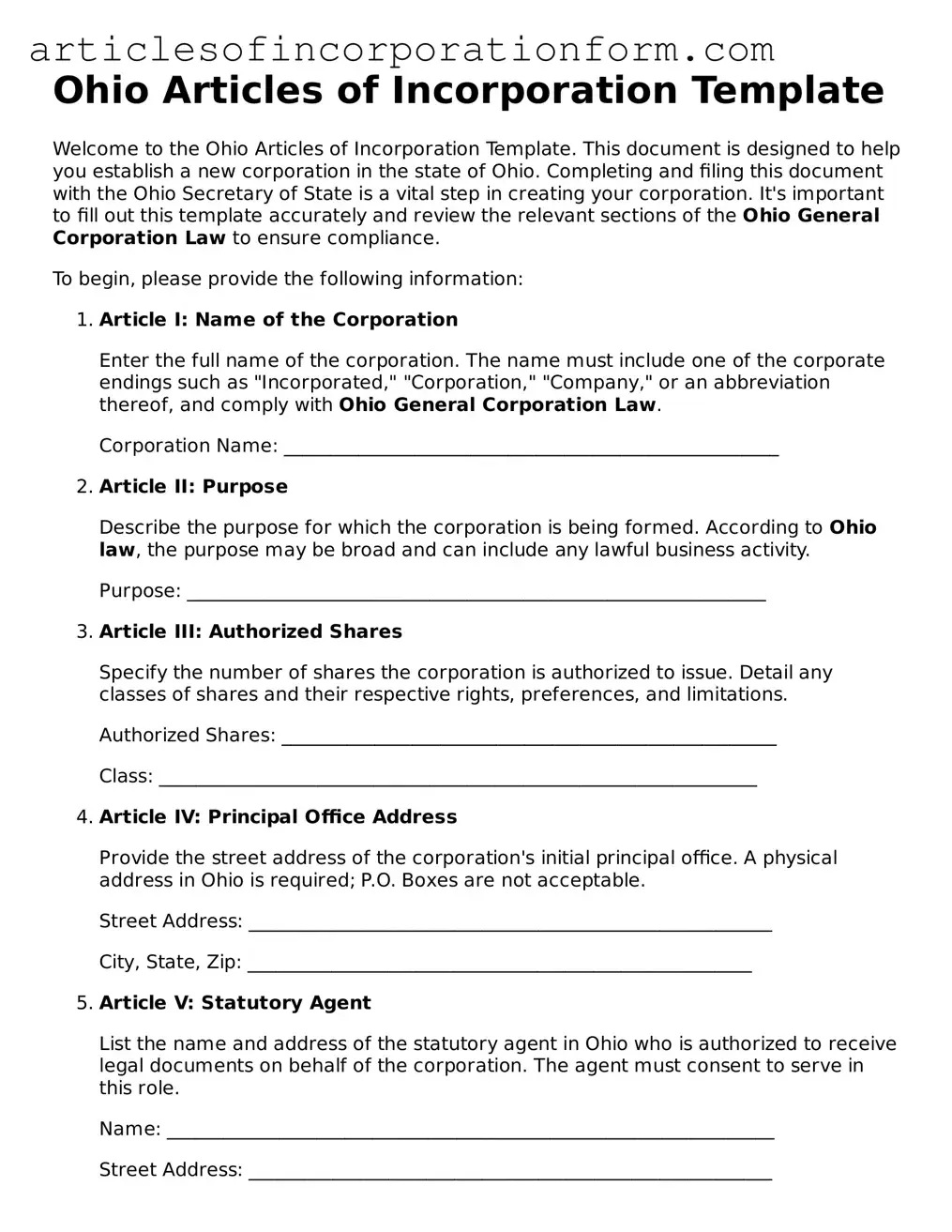What is the purpose of the Ohio Articles of Incorporation form?
The Ohio Articles of Incorporation form is used to legally establish a corporation in the state of Ohio. It marks the official beginning of a business's existence under state law and provides essential details about the corporation, such as its name, purpose, incorporating agent, and share structure. This form is a critical step for any business seeking to operate as a corporation within Ohio.
Who needs to file the Ohio Articles of Incorporation?
Any group or individual intending to form a corporation in Ohio must file the Ohio Articles of Incorporation. This applies to both for-profit entities seeking to operate businesses and non-profit organizations aiming to carry out their missions within the state.
Where can one obtain the Ohio Articles of Incorporation form?
The form can be obtained from the Ohio Secretary of State's website. There, it is available for download in a format that can be filled out electronically or printed and completed by hand. Additionally, paper copies may be available at some local offices or legal stationery stores.
What information is required for completing the Ohio Articles of Incorporation?
To complete the form, you'll need to provide various pieces of information including the proposed corporation's name, the location of its principal office, the name and address of its statutory agent in Ohio, the corporation's purpose, and details about the authorized shares it will issue. Depending on the corporation type, additional details may be required.
Is there a filing fee for the Ohio Articles of Incorporation?
Yes, there is a filing fee associated with the Ohio Articles of Incorporation. The amount varies depending on whether the corporation is for-profit or non-profit. The latest fee schedule is available on the Ohio Secretary of State's website.
How are the Ohio Articles of Incorporation filed?
After completing the form, it can be filed with the Ohio Secretary of State either online, by mail, or in person. Online filing is generally the fastest option, but some may prefer mailing or delivering their forms directly. Detailed instructions and the current address for mail or in-person filings can be found on the Secretary of State's website.
Can the Ohio Articles of Incorporation be amended?
Yes, if changes need to be made to the information included in the Ohio Articles of Incorporation after they have been filed, the corporation can file an Articles of Amendment form with the Secretary of State's office. This is commonly done to change the corporation's name, adjust share information, or update the statutory agent details.
What happens if the Ohio Articles of Incorporation are not filed?
Without filing the Ohio Articles of Incorporation, a business cannot legally operate as a corporation within the state. This means it would lack the legal protections and benefits offered to corporations, such as limited liability for its owners. Additionally, it would not be authorized to engage in certain business activities that are restricted to corporations.
